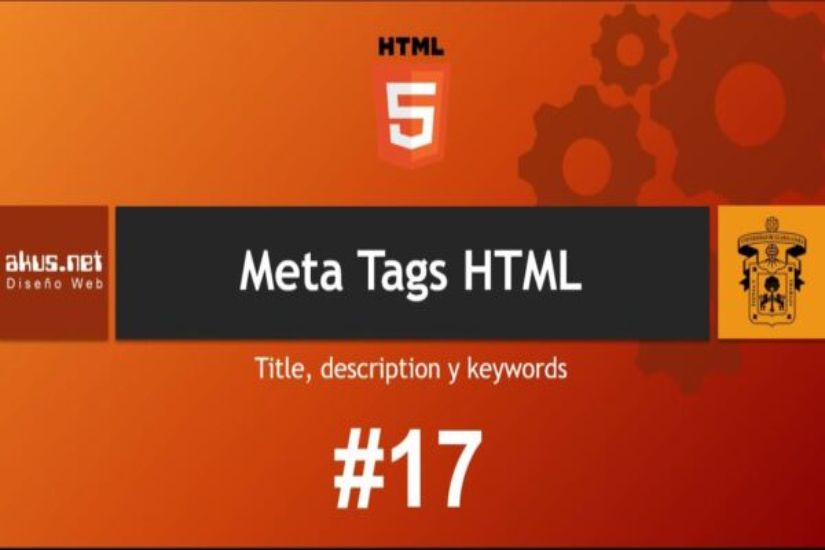Guide to Meta Tag Optimization

Meta tag optimization is not only vital for SEO, but it also improves the user experience by making your content more accessible and understandable to search engines.
How to optimize meta tags for your website?
HTTP Header Meta Tags
In addition to traditional HTML meta tags, consider HTTP header tags, such as “X-Robots-Tag,” which can control page crawling at the server level. This is especially useful for dynamically generated pages where you can’t edit the HTML easily.
Optimal Length of Meta Tags
For the title, it’s ideal to keep it between 50-60 characters to prevent it from being cut off in search results. The meta description should be concise, between 150-160 characters, to effectively communicate the value of the page without exceeding the limits of search engines.
Use of Social Goals
Open Graph (OG) meta tags and Twitter Cards are essential to improve visibility on social networks. These tags allow you to customize how links are displayed on platforms such as Facebook and Twitter, directly influencing user interaction.
Advanced Strategies
Geo-targeting meta tags
Use the “geo.position” meta tag for local SEO, helping search engines understand your site’s geographic relevance.
Meta robots
It controls how search engines index pages with tags such as “noindex”, “nofollow”, “nosnippet”, etc. These tags are crucial for managing access to pages you don’t want to appear in search results.
Technical Implementation
Meta Tag Validation
Use tools like Google Search Console to monitor how Google interprets your meta tags and make adjustments if necessary.
Meta tag a/b testing
Experiment with different versions of your titles and descriptions to see which ones generate a higher CTR (click-through rate). Tools like SEMrush and Ahrefs offer features to monitor the performance of your meta tags.
By incorporating these advanced elements and making sure to keep your meta tags up-to-date and optimized, you can significantly increase the effectiveness of your SEO strategy.
This comprehensive approach not only improves your search engine rankings, but also strengthens the consistency and relevance of your online presence.
How Do Meta Tags Impact SEO?
1. Improved Semantic Relevance
Meta tags help search engines understand the context and content of a page, improving the semantic relevance of your site. For example, specific meta tags such as meta name=”theme-color” allow you to specify the theme color in mobile browsers, improving the user experience and reinforcing your brand’s visual identity in search results.
2. Impact on Search Rankings
While meta tags alone are not a direct ranking factor, they influence user behavior and the quality signals that Google considers for ranking. A catchy title and accurate description can increase click-through rate (CTR), which is a strong indication of relevance to Google.
3. Clarity and precision in meta descriptions
While a meta description doesn’t directly influence rankings, a clear and engaging description can make the difference between a user clicking on your link or choosing another.
Make sure each description is unique, accurately reflects the content of the page, and contains a subtle call-to-action that invites the user to learn more.
4. Using Canonical Content Meta Tags
Use the link rel=”canonical” tag to avoid duplicate content issues. This is especially important if you’re publishing content that can be accessed by multiple URLs.
Telling Google what the canonical URL is helps consolidate the authority of the page and ensures that all links and ranking metrics accumulate correctly.
5. Mobile-friendly
With the rise of mobile, it’s crucial that your meta tags reflect a mobile-optimized strategy. Tags like meta name=”viewport” content=”width=device-width, initial-scale=1″ are essential to ensure that your site is mobile-friendly and can provide a proper user experience.
6. Schema Markup Integration
Beyond traditional HTML meta tags, integrating Schema Markup can significantly improve the way your pages are presented in search results.
This includes everything from product reviews to events and people profiles. Schema Markup helps search engines not only understand the content, but display it more attractively and richly in the SERPs.
7. Constant monitoring and analysis
Meta tag optimization is not a one-size-fits-all process. It requires continuous monitoring and performance-based adjustments. Tools like Google Analytics and A/B testing are vital to understanding how your changes affect user behavior and optimizing accordingly.
8. Adaptation according to language and culture
If your site operates in multiple regions, consider localizing your meta tags to culturally and linguistically tailor them to each audience. Not only does this improve local relevance, but it can also significantly increase click-through rate and user satisfaction in different markets.
Implementing a comprehensive meta tag strategy is more than just filling in a few fields; It’s an integral part of your website’s architecture and a crucial tool for improving both visibility and user engagement.
By following these guidelines, you can ensure that your site not only meets modern SEO standards, but also offers a rich and engaging experience for your visitors. With these knowledge and techniques, you’re well-equipped to take your SEO to the next level.